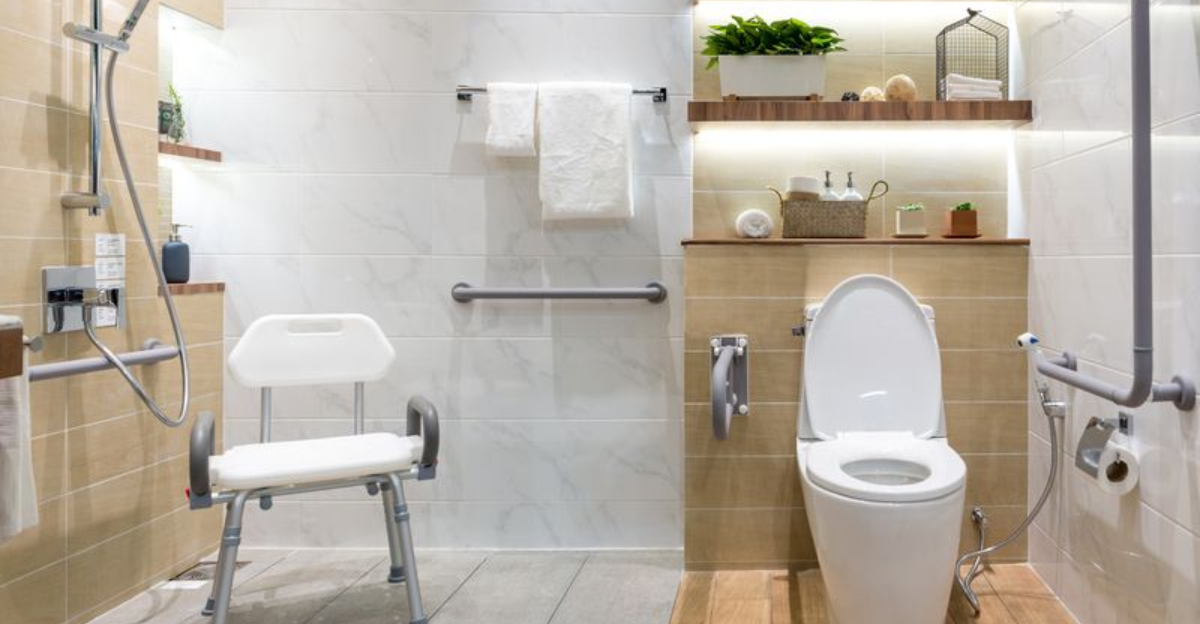Retirement brings a new chapter in life, often prompting thoughts about home renovations. While some upgrades can enhance comfort and accessibility, others might drain savings or create unexpected hazards.
Before you swing that sledgehammer or call contractors, it’s worth knowing which home improvements might not serve you well in your golden years.
1. Installing a Clawfoot Tub

Nostalgia might tempt you toward these vintage beauties, but climbing in and out of a clawfoot tub can become a daily challenge.
Balance issues increase with age, making these deep, freestanding fixtures potential safety hazards. The high sides require significant leg lifting and core strength that many seniors find increasingly difficult.
2. Adding Steep Staircases or Loft Spaces

Knee problems don’t announce their arrival with a formal invitation. Suddenly, that charming spiral staircase to your new loft becomes an insurmountable obstacle.
Joint pain affects nearly half of all adults over 65, making steep stairs a daily challenge. Plus, hauling items up and down increases fall risks that could lead to serious injuries.
3. Removing the Main Floor Bedroom

Converting your ground-floor bedroom into that dream entertainment space might seem appealing now. Fast forward five years, and you might regret sacrificing accessibility for temporary enjoyment.
Main-floor bedrooms become increasingly valuable as mobility decreases. Without one, you could face costly renovations later or even premature moves to assisted living.
4. Choosing High-Maintenance Landscaping

Elaborate gardens with intricate designs might impress neighbors today but become tomorrow’s backbreaking burden. Kneeling to weed ornamental beds gets harder each year.
Physical stamina naturally decreases in retirement years. Complex landscaping often leads to hiring expensive maintenance services or watching your beautiful garden deteriorate into an overgrown mess as your ability to maintain it diminishes.
5. Switching to All Open Shelving in the Kitchen

Magazine-worthy open shelving displays might catch your eye on Pinterest, but the reality involves constant dusting and organization. Every dish becomes visible, requiring perfect arrangement.
Arthritis makes frequent reaching and arranging increasingly difficult. Additionally, memory changes can make finding items frustrating when everything’s visible but nothing has a designated, enclosed space.
6. Skipping Grab Bars in Bathrooms
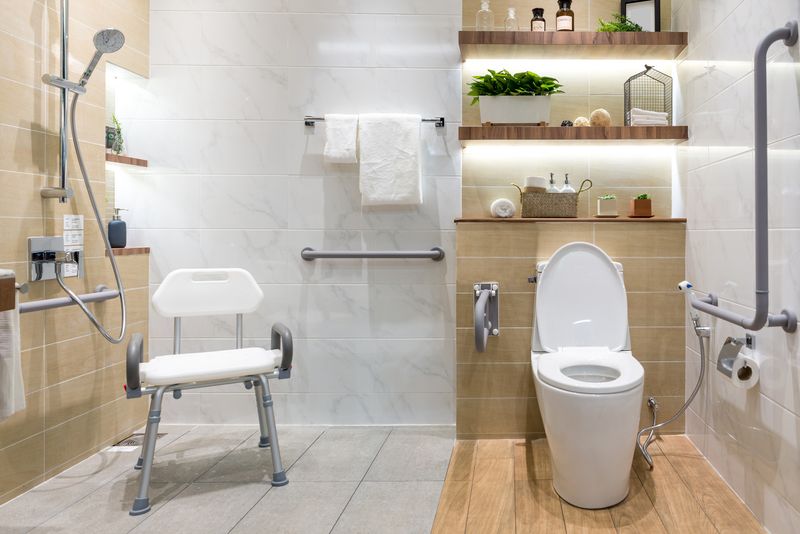
Avoiding grab bars because they look “too institutional” could lead to dangerous situations. One momentary slip on wet tile can result in life-changing injuries.
Modern grab bars come in stylish designs that complement any decor. Balance naturally declines with age, making these safety features essential, not optional. Investing in them early prevents more costly emergency renovations after a fall.
7. Using Slippery Flooring Materials

Gleaming marble floors might exude luxury, but they transform into skating rinks when wet. Even small water spills create major hazards for older adults.
Falls represent the leading cause of injury among seniors. Opting for non-slip flooring materials like textured tile or cork provides both safety and style. Remember that prevention costs far less than hospital bills.
8. Replacing Bathtubs with Oversized Hot Tubs
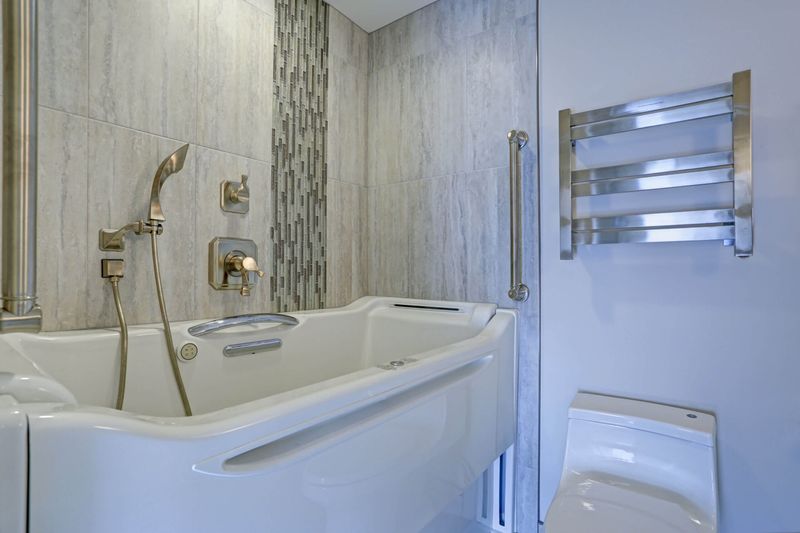
Luxurious jetted tubs with high sides might seem like the ultimate relaxation upgrade. Unfortunately, climbing in and out becomes increasingly challenging as mobility decreases.
Heat sensitivity increases with age, making temperature regulation difficult. Many medications common among seniors also interact poorly with extended hot water exposure. A walk-in shower with a seat offers both safety and comfort.
9. Converting the Garage Into Living Space

Transforming your garage into that dream hobby room eliminates valuable covered parking. Suddenly, you’re trudging through rain and snow to reach your car.
Weather exposure becomes increasingly challenging with age. Joint pain often worsens in cold, damp conditions. Additionally, carrying groceries longer distances increases fall risks and makes everyday tasks unnecessarily difficult.
10. Installing Complicated Smart Home Systems
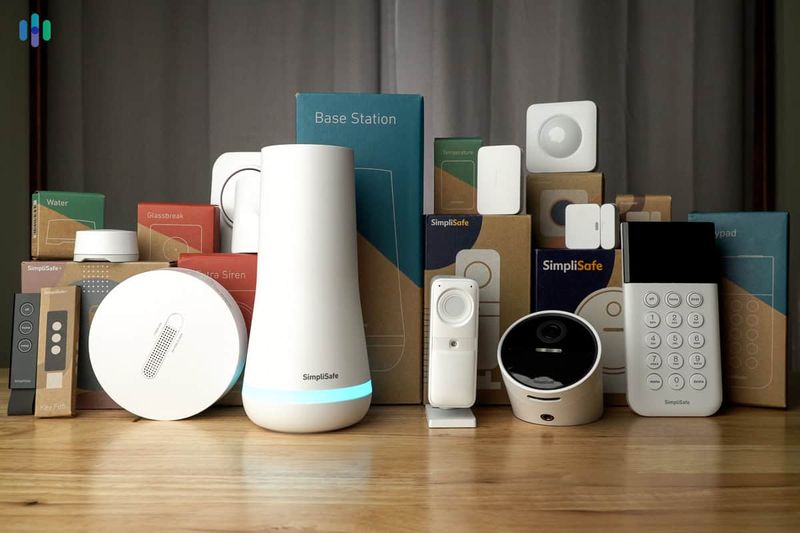
Voice-activated lighting sounds futuristic until software updates render everything unusable. Complex technology often creates more frustration than convenience for many retirees.
Constantly changing interfaces can become overwhelming. Simple, intuitive controls with physical buttons provide reliability that cutting-edge systems often lack. Focus on user-friendly technology that remains accessible even when Wi-Fi fails.
11. Removing Closets for More Floor Space
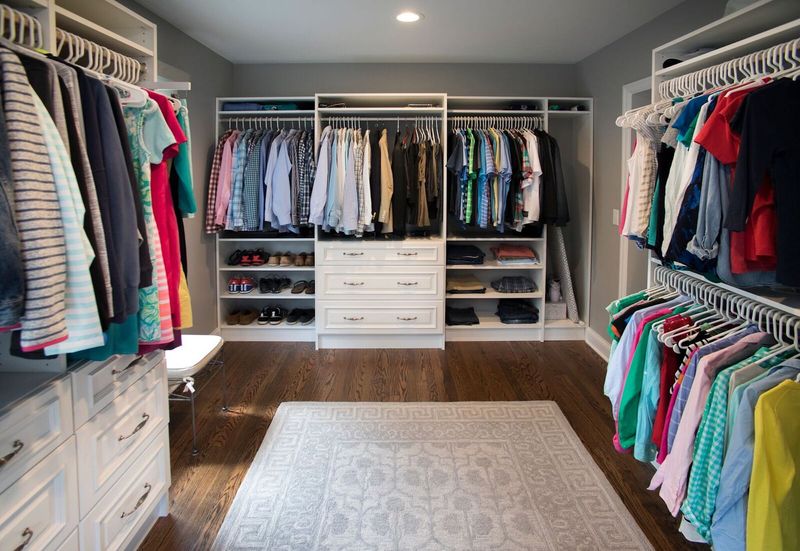
Sacrificing storage for an open concept might seem appealing until you’re climbing stepladders to reach items in overhead cabinets. Adequate, accessible storage becomes increasingly important with age.
Physical limitations make bending and reaching more difficult over time. Without proper closet space, everyday items become frustratingly inaccessible. Maintain storage options that keep necessities within easy reach.
12. Installing High-Gloss or Glass Surfaces Everywhere

Sleek, reflective surfaces create sophisticated ambiance but hide a dark secret: they show every fingerprint and smudge. Vision changes make spotting these imperfections increasingly difficult.
Maintaining pristine glass and high-gloss surfaces requires constant cleaning. Arthritis can make these repetitive motions painful. Matte finishes and naturally textured materials provide both style and practicality without the maintenance headaches.
13. Eliminating the Dining Area Completely
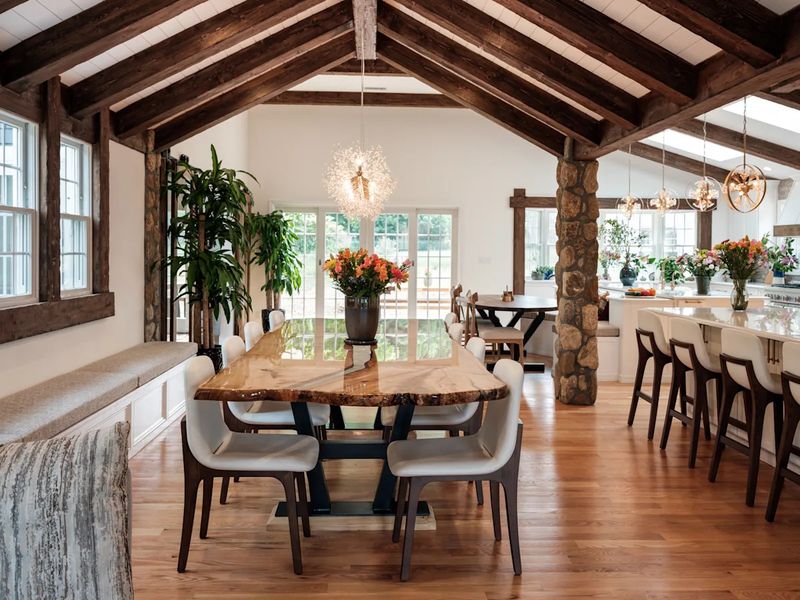
Casual eating at the kitchen counter might suit your current lifestyle, but formal dining spaces serve important social functions in retirement years.
Dedicated dining areas encourage regular family gatherings and entertaining friends. Social connections become increasingly valuable for mental health as we age. Having proper space for shared meals helps maintain these vital relationships.
14. Going Ultra-Modern With Sharp-Edged Furniture

Minimalist furniture with sharp corners looks stunning in design magazines but creates bruising hazards in real life. Balance naturally declines with age, increasing collision risks.
Skin becomes thinner and more prone to tearing as we age. What might cause a minor bump at 40 could create a serious injury at 70. Rounded edges and padded surfaces provide both style and safety.
15. Prioritizing Style Over Accessibility

Dramatic level changes between rooms might create architectural interest but also create tripping hazards. Small steps or thresholds often go unnoticed until someone falls.
Mobility naturally changes with age. Features that seem minor now—narrow doorways, sunken living rooms, or high cabinets—can become major obstacles later. Incorporating universal design principles maintains both aesthetics and functionality throughout retirement.
16. Turning the Only Tub Into a Walk-In Shower
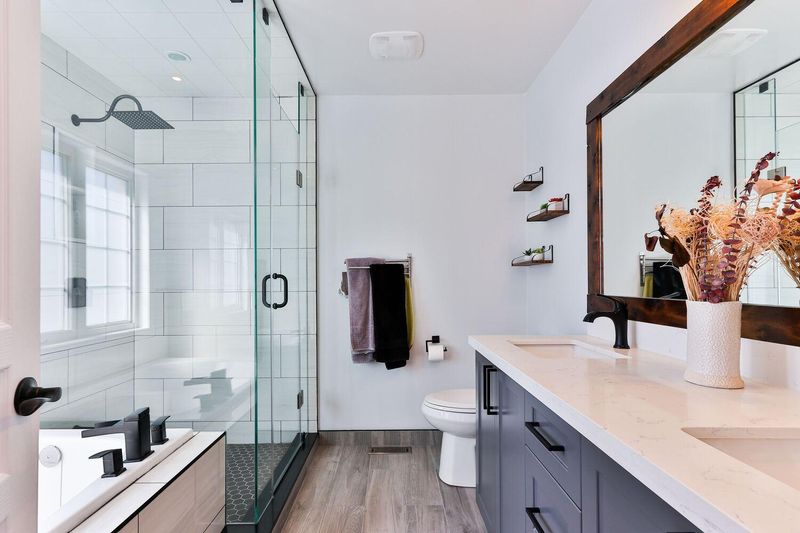
Removing your home’s only bathtub dramatically reduces buyer appeal if you ever need to sell. Young families specifically seek homes with tubs for bathing children.
Limited mobility might make showers preferable now, but circumstances change. Injuries often require soaking treatments, and having no tub eliminates this option. Consider a walk-in tub instead of eliminating bathing options entirely.
17. Adding Second-Floor Additions Without an Elevator

Expanding upward might solve space issues today but creates accessibility nightmares tomorrow. Knee replacements and heart conditions can make stairs impossible to navigate.
Installing elevators after construction costs three times more than incorporating them during initial building. Many retirees eventually abandon entire floors of their homes when stairs become too challenging, wasting both space and money.
18. Making the Whole House Voice-Controlled

Voice recognition technology struggles with hearing aids, speech changes, and accents common among older adults. Frustration builds quickly when lights repeatedly ignore commands.
Power outages render voice-only systems completely unusable. Cognitive changes can make remembering specific command phrases increasingly difficult. Always maintain simple manual controls alongside any smart features for reliability.
19. Removing All Doors for a “Flowy” Layout

Open concept living sounds appealing until privacy becomes paramount. Removing bathroom and bedroom doors creates awkward situations when visitors arrive.
Aging often brings multiple generations under one roof temporarily. Caregiving situations require privacy for dignity. Doorless designs also allow noise to travel throughout the home, disrupting sleep patterns already challenged by age.
20. Installing a Floating Staircase Without Railings

Architecturally stunning open-tread stairs without handrails might impress guests today but become death traps tomorrow. Balance naturally declines with age, making falls increasingly likely.
Night vision deteriorates significantly after 60, making unguarded steps particularly dangerous during evening bathroom trips. Even minor falls can cause life-altering injuries for seniors. Always prioritize substantial railings and closed risers for staircase safety.

